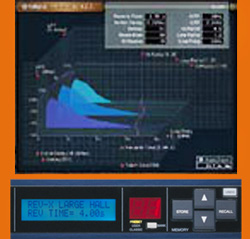Are effect tools or toys? The answer is, it depends.
In the hands of a seasoned operator, time-based effects deepen the sonic landscape and present a clarified image of the proceedings. However, when wielded by a careless knob-jockey, effects tend to cheapen the sound and draw attention away from the message of the song.
The difference between tool and toy falls to understanding the effect’s purpose and its role within the larger scope of the song.
Fortunately, the learning curve for effects is shallow and the concepts straightforward. Here, then, are some simple steps to transform a staid mix into a stellar achievement by using effects to their fullest.
In the worship environment, the differentiating factor of a song is its lyrical content. The words convey the eternal meaning. Thus, vocals must take priority in the mix. Before the effects are brought in, the vocals must stand on their own with clarity and intelligibility, the ability to distinguish among consonants.
Once the vocals are gained properly on the console, a judicious EQ cut in the low-midrange (around 250—500 Hz) will do wonders for vocal transparency. Once clear, the dry vocal can be enhanced with effects.
Types Of Effects
Effects can be based on time or level manipulation. Level (or dynamics) controllers use compression, gating, expansion, and limiting to adjust the level of the signal. In contrast, time-based effects combine the original signal with a delayed one to form a new construct that is a combination of the two.
From their early days as mechanical devices to today’s software model algorithms, time-based effects have evolved in step with other technologies. Along the way, though, certain designs crossed the threshold of fad and became classics.
Plate reverb, tape delay, and spring tanks survived the test of time and are standard settings on any current digital processor. Reverb and delay effects use signal reflection or regeneration over time to provide aural cues for room size and character.
Reverb is diffuse; that is, its reflections are too numerous and dense to perceive individually. Early reflections from nearby surfaces combine with later reflections from distant areas to create the room’s sonic signature.
Delay, on the other hand, is distinguishable to some extent. Discreet reflections can be detrimental to speech clarity but beneficial for music production. If the real environment contains smooth natural reverb decay within the timeframe appropriate for its use, there is no need for artificial reverb.
Reverb tends to reduce intelligibility, so adding reverb to a reverberant room is counterproductive. However, if the room is acoustically dead or neutral, digital reverb and delay can add to the music’s sense of space and presence.




















